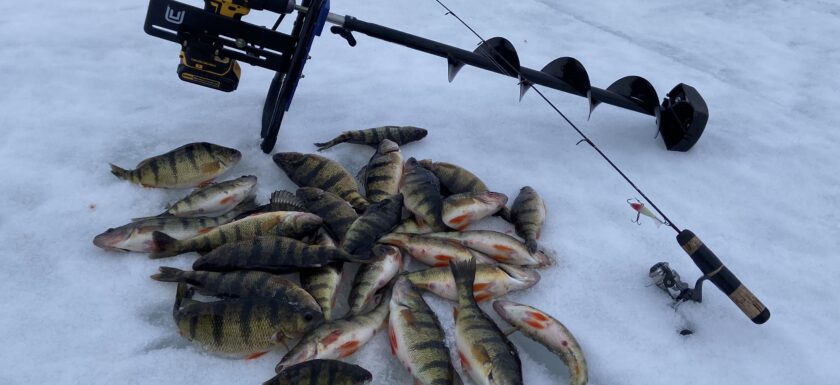
It’s early January in Upstate New York and the ice fishing season is expected to be very good. Extended below-normal cold temperatures will build thick ice on the lakes and bays. We are overdue for a real winter.
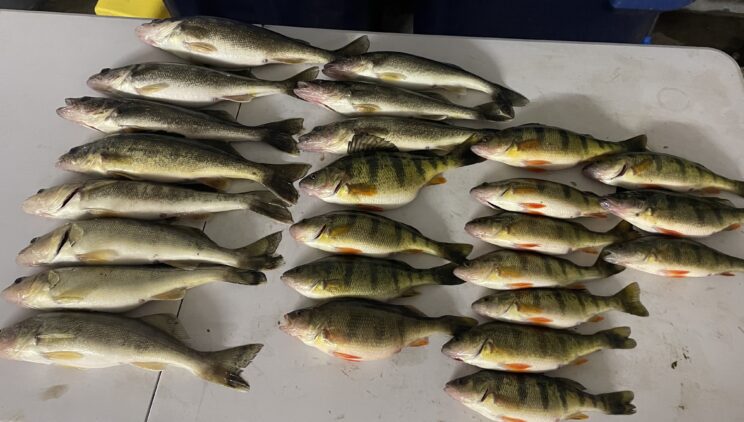
It will feel nostalgic when, if, I find myself guiding and fishing in places and locations I’ve been absent the last several winters due to mild weather.
The extended forecast does look good…Lived around here long enough to know however that the weather stays consistantly unpredictable.

The lack of safe ice for the last several winter seasons has kept the hordes of anglers from maurauding local hot spots. The fish in the basins and weedy shallow bays of local lakes and rivers have enjoyed a respite from the army of augers and anglers.
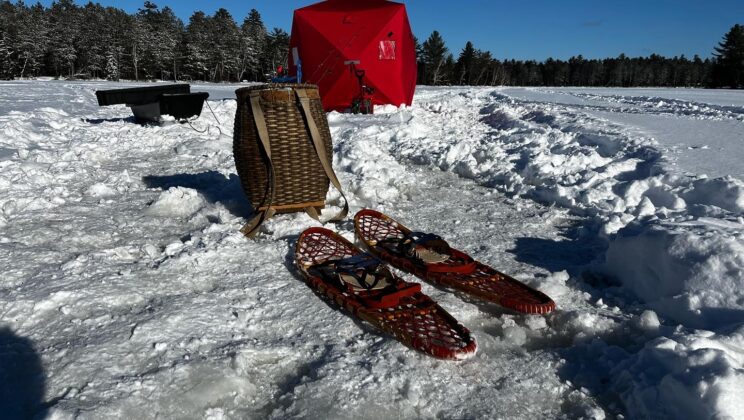
Ice fishing evokes images of Walter Matheau sitting inside an ice shanty wrapped in a thick scarf, sipping beer, smoking a cigar, and throwing insults at Jack Lemon. Ice fishing can be a serious activity. Often a difficult and challenging game.
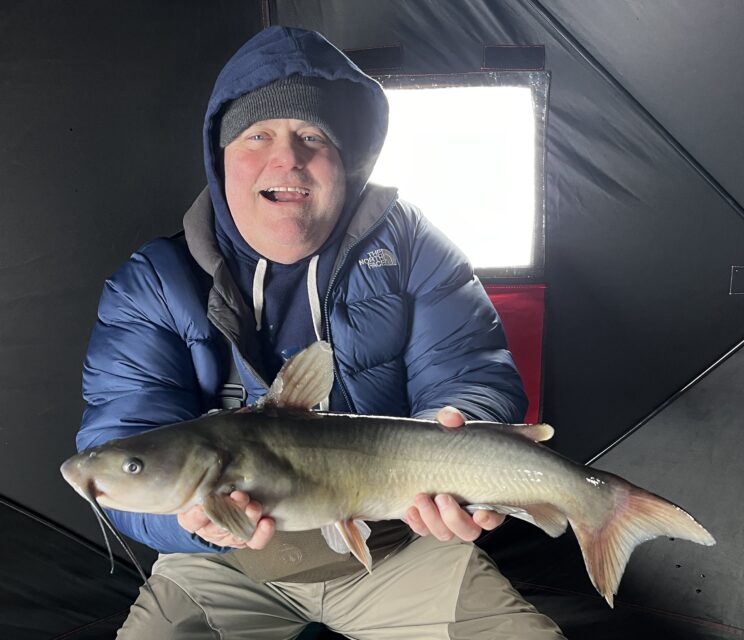
The evolution of ice fishing equipment and the popularity of the activity has grown incredible over the last two decades. Around 1980 the first portable sonars made their debut. Transducers illuminated the world of schooling fish under the ice with one dimension digital display.
These devices opened the curtain to an underwater stage. Sonars. Flashers. Graphs. Fish Finders. They were called different names by different people. But they all did the same thing: Identified fish, depth, and structure with precision.
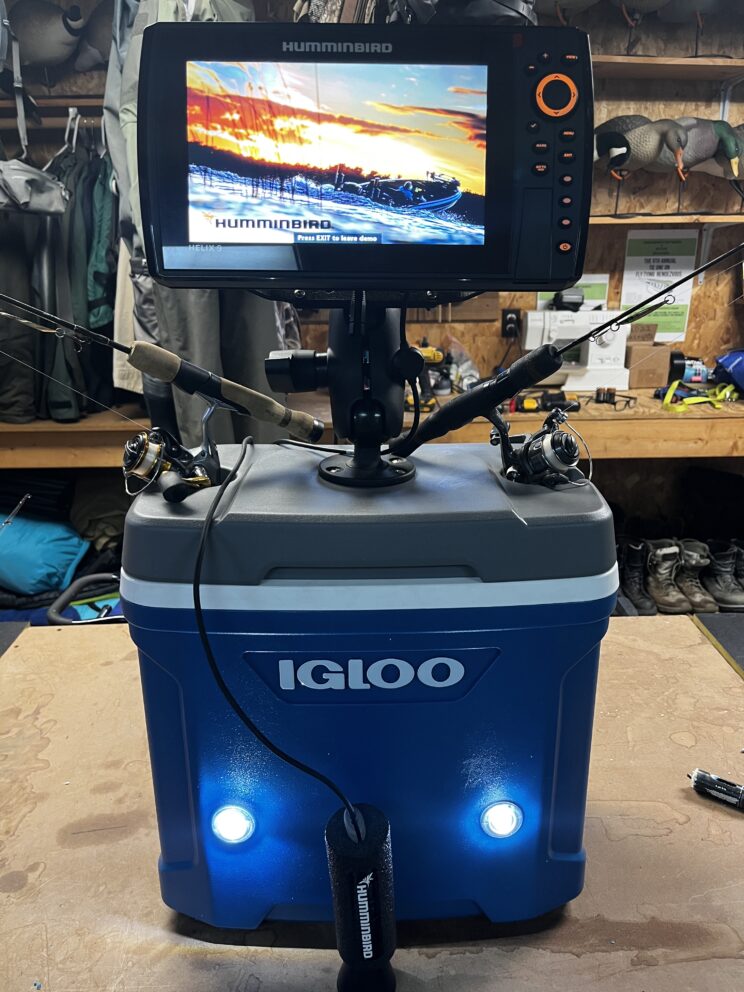
Before portable ice fishing electronics were manufactured and marketed hardwater anglers (with resourceful ingenuity) removed sonar units from the console of their boats and rigged them for travel and deployment on the ice.
The portable sonar is a piece of equipment I will not ice fish without. The technology has improved incredible. Real-time images make a sonar screen akin to a television. The clarity, resolution, mobility and price of todays ice fishing sonars is awesome!
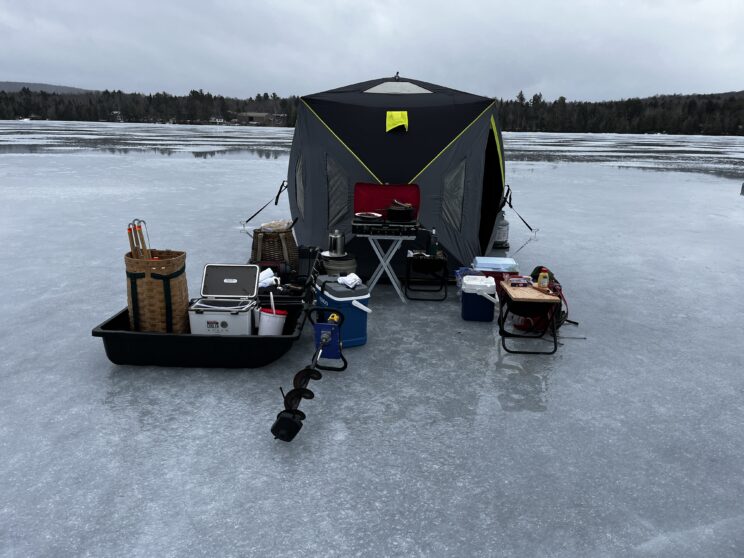
Lightweight portable shelters, portable heaters, four-stroke snowmobiles with heated hand warmers — pocket sized GPS units that can find a six inch hole in the ice on six square miles of frozen lake…It was not so long ago when we hiked around on the ice in Army Surplus boots, dragging red plastic sleds on a rope with five gallon buckets full of homemade rods rigged with homemade lures.
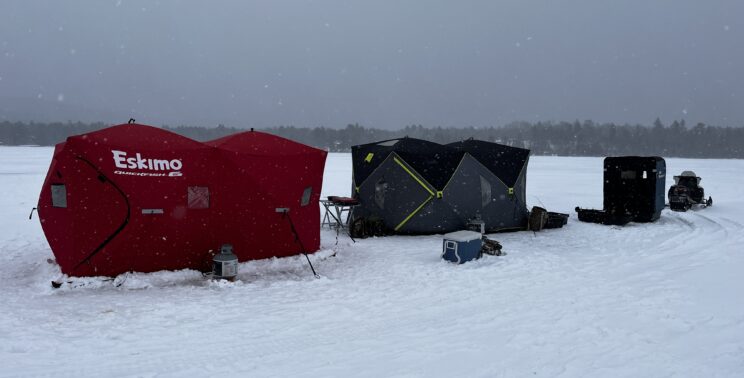
As an ice fishing guide I introduce many people each winter to the activity. The list of equipment needed — hauled on and off the ice — is often extensive. Keeping people comfortable and safe is paramount. In general my guests are unaccustomed to the environment of a frozen lake’s surface. It takes plenty of gear to create an enjoyable experience. To provide the best chances at good catches of fish.
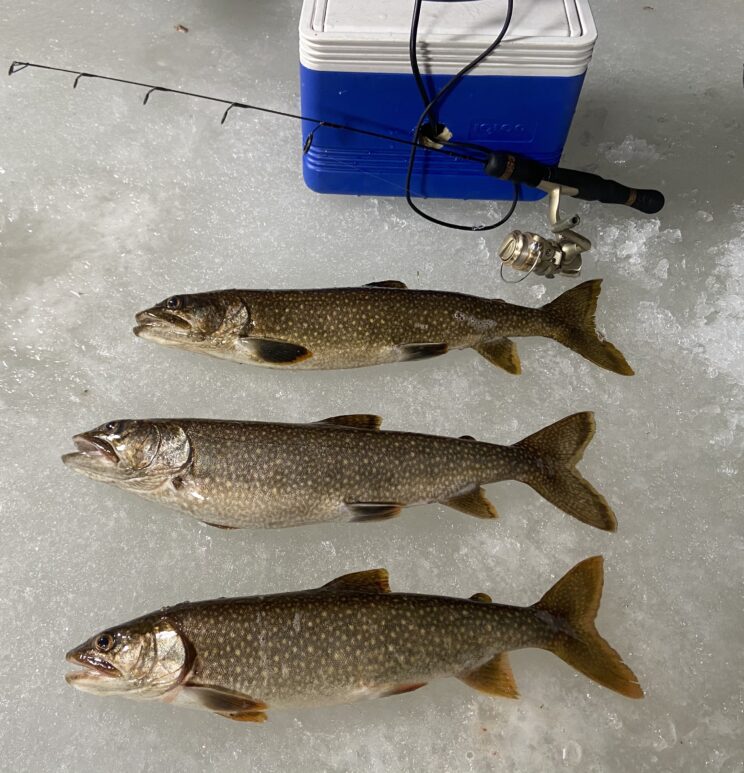
The simplicity of ice fishing today is not lost. Just harder to find.
Finding fish and getting them to bite will always be the challenge. And the fish will never know how advanced we have become, what high-tech tools we have with us. The fish will just continue to bite or not bite.
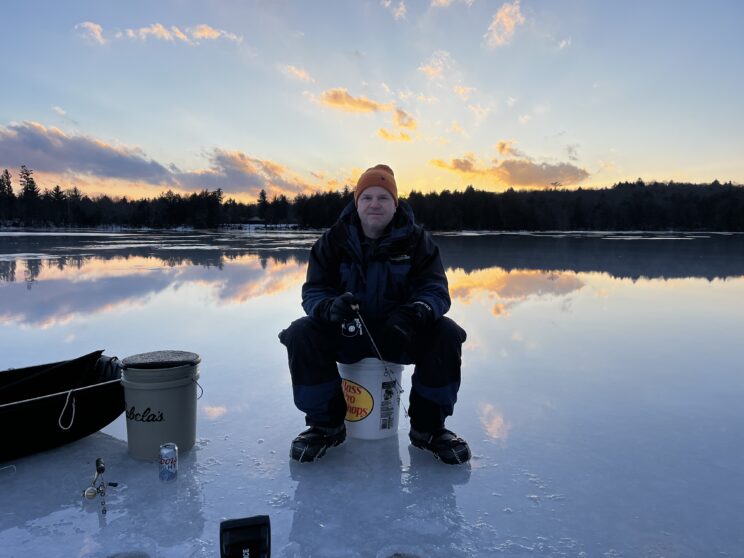
Stay safe.
Peace.
Mike

